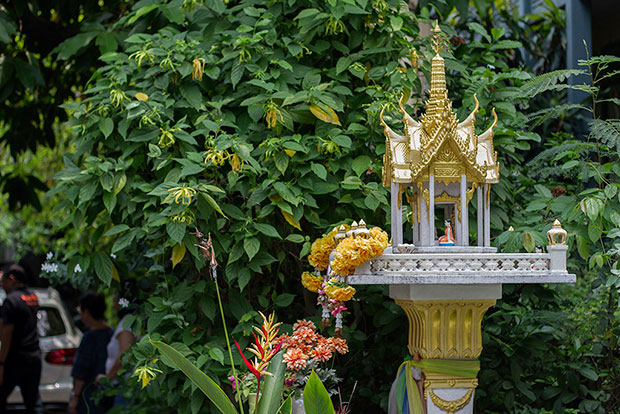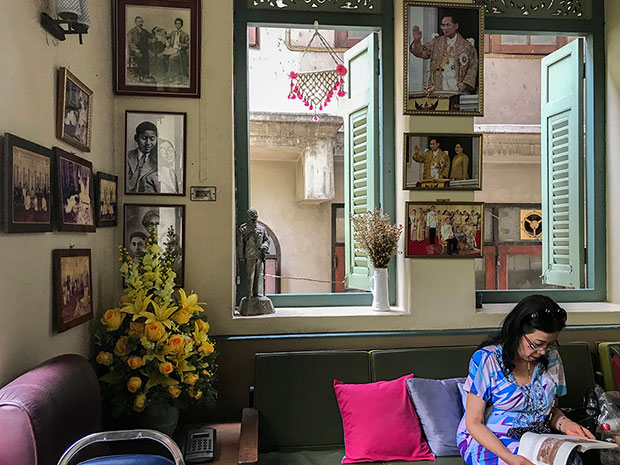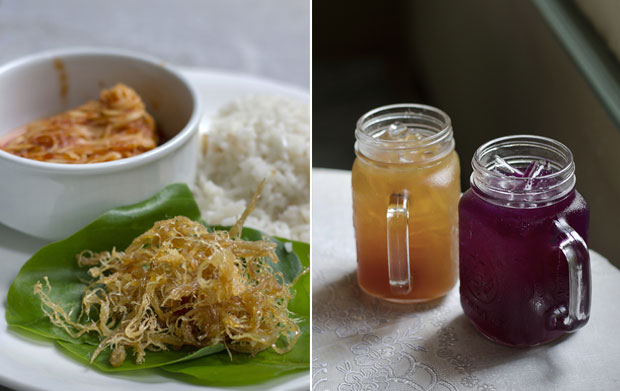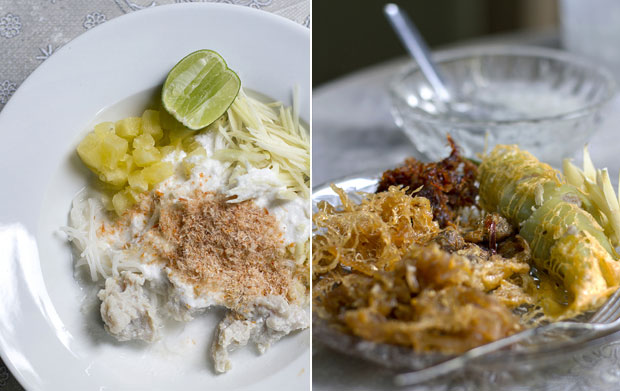BANGKOK, April 15 — We turn into a small alley off the busy Soi Damnoen Klang Tai and are greeted by a rowdy marketplace of lottery ticket sellers. Not exactly where we expected to find a little-known Thai summer dish typically eaten during Songkran.
You see, the weather is sweltering during Songkran, the world-famous Thai New Year festival. Local custom calls for cooling down with splashes of icy-cold water. Looking for another way to deal with the rising temperatures beyond getting pelted by squirt guns and water pistols, we learned of khao chae (“rice soaked in cool water” in Thai).

Originally eaten by the Mon people and then introduced to Thailand during the reign of King Rama II, khao chae involves soaking rice in flower-scented water and ice, and enjoying it with some savoury side dishes. For the longest time, it wasn’t even available to the public as it was deemed part of royal Thai cuisine.
These days, this chill-out classic appears at some restaurants as a seasonal delicacy in the summer. But the best khao chae is prepared at home, which is why we’re wandering in side streets looking for Baan Varnakovida. And then we spot it.

The 130-year-old, two-storey house built during the reign of King Rama VI looms large amidst thick greenery. Constructed of wood, the Varnakovida family home is a bastion of yesteryear amidst Bangkok’s sprawling jungle of concrete condominiums. While this home-based restaurant run by matriarch Apavinee Indaransi has been opened since 2014, it remains a secret shared among regulars through word-of-mouth.
And who can blame them? After the dirt and smog of the streets, Baan Varnakovida’s lush garden feels like a paradise. Mature fruit trees such as lamoot (familiar to Malaysians as ciku) offer shade. An old glazed terracotta pot is a refuge for tiny fish and floating water plants. A sanphraphum or spirit house offers shelter to the celestial phii. This feels like a blessed place.

We remove our shoes before entering the house; this is akin to dining at a private home, after all. Inside, the walls of every room are adorned with family photographs and framed portraits of the late King Bhumibol Adulyadej, Rama IX of Thailand. Other diners are already tucking into their meals or waiting on well-worn sofas for the rest of their party to arrive.
This isn’t the chaos and noise of Thai street food, nor is this Bangkok’s well-heeled fine dining scene. No, it’s something in between and something few of us outsiders ever to get to experience: the comforts of home cooking, of dining in someone’s baan (“home”).
Refreshments are typically Thai iced beverages meant to cool us down from the summer heat. The tangy nam ma kham (tamarind juice) is popular. We opt for homemade nam dok an shan (lemon butterfly pea flower tea) and aromatic, marmalade-like nam matoom (dried bael juice).

While waiting for the khao chae, we share an assortment of other dishes: khanom jeen sao naam, thin rice vermicelli soaked in coconut cream and served with fresh pineapple chunks and finely sliced young ginger; khao man somtum, a coarsely grated sweet-spicy papaya salad served with rice cooked in coconut milk; and khao tod yum naem sod, where we wrap a mixture of fermented pork sausage, red curry rice croquettes, coriander, mint and fried peanuts in a fresh betel leaf.
When our khao chae finally arrives — an assemblage of rice, jasmine water, ice cubes and condiments — we know it’s well worth the wait. For one thing, authentic khao chae entails laborious preparation and Baan Wannakovit has perfected their recipe, handed down from generation to generation.
The rice has to be rinsed many times to remove its starch. In lieu of ordinary jasmine rice, which is too soft, a special firm rice called khao taa haeng is used. Fresh jasmine blossoms are added to a pot of water to create the flower-scented water.

The actual process is secret but apparently repeated for several rounds of other flowers, including ylang-ylang and roses, until the water is infused with the natural floral oils.
The various home-cooked condiments are served with the khao chae. Every home has their own standard khao chae sides and Baan Varnakovida is no different. It’s quite a smörgåsbord: luk kapi, shrimp paste balls seasoned with palm sugar and wild ginger; sweetened beef floss (nuea foi) and pork floss (mu foi) chaipo phat khai, sweet pickled Chinese turnips with eggs; prik yuak sot sai, sweet peppers stuffed with spiced ground pork and wrapped in an egg lace; and fresh cucumber and wild ginger to aid digestion.
Part of the fun is learning how to eat khao chae the right way. Instead of heaping our bowls with rice, we are shown how that a third full is enough. We then pour some jasmine-infused water to cover the rice grains and a few ice cubes to cool this do-it-yourself porridge down.

Proper khao chae etiquette requires that we never mix our rice and side dishes together in the bowl. It’s considered more polite to nibble the condiments and then have a spoonful of our ice porridge. The fresh cucumber and wild ginger are palate cleansers, balancing the heavier flavours of the sides.
It feels quite sacred, this ritual. Every bite connects us to generations of diners before us who have partaken in the delights of khao chae. This summer we join their ranks, with our lips blessed by the subtle fragrance of garden flowers.

Baan Varnakovida doesn’t have an extensive menu but they do rotate several home-cooked dishes such as khao tang na tang (rice crackers with coconut dip) and mi krop (crispy rice noodles in sweet-sour som sa sauce, served with fresh bean sprouts).
Another little-seen dish is pun clip pla. The steamed rice ravioli with fish filing gets its spicy aroma from a winning blend of minced coriander root, ground pepper, garlic and shallots. For dessert, we enjoy some young coconut pudding; refreshing without being cloyingly rich or too sweet.
Khao chae is a one-of-a-kind, only during summer dining experience. But even more memorable is the experience of eating at someone’s home: to be a guest, invited into their home; to be rejuvenated by their green, green garden; to marvel at all the framed photographs of their beloved late King and realise how much love this family has.

Indeed, we see this at every home we have had the good fortune to visit, without fail. How moving this is, a feast for the body and the soul.
Baan Varnakovida
64 Thanon Tanao, Wat Bowon Niwet, Phra Nakhon, Bangkok
Opens daily (except Thu closed) 11am-4pm
Tel: +66 8 1922 6611






















